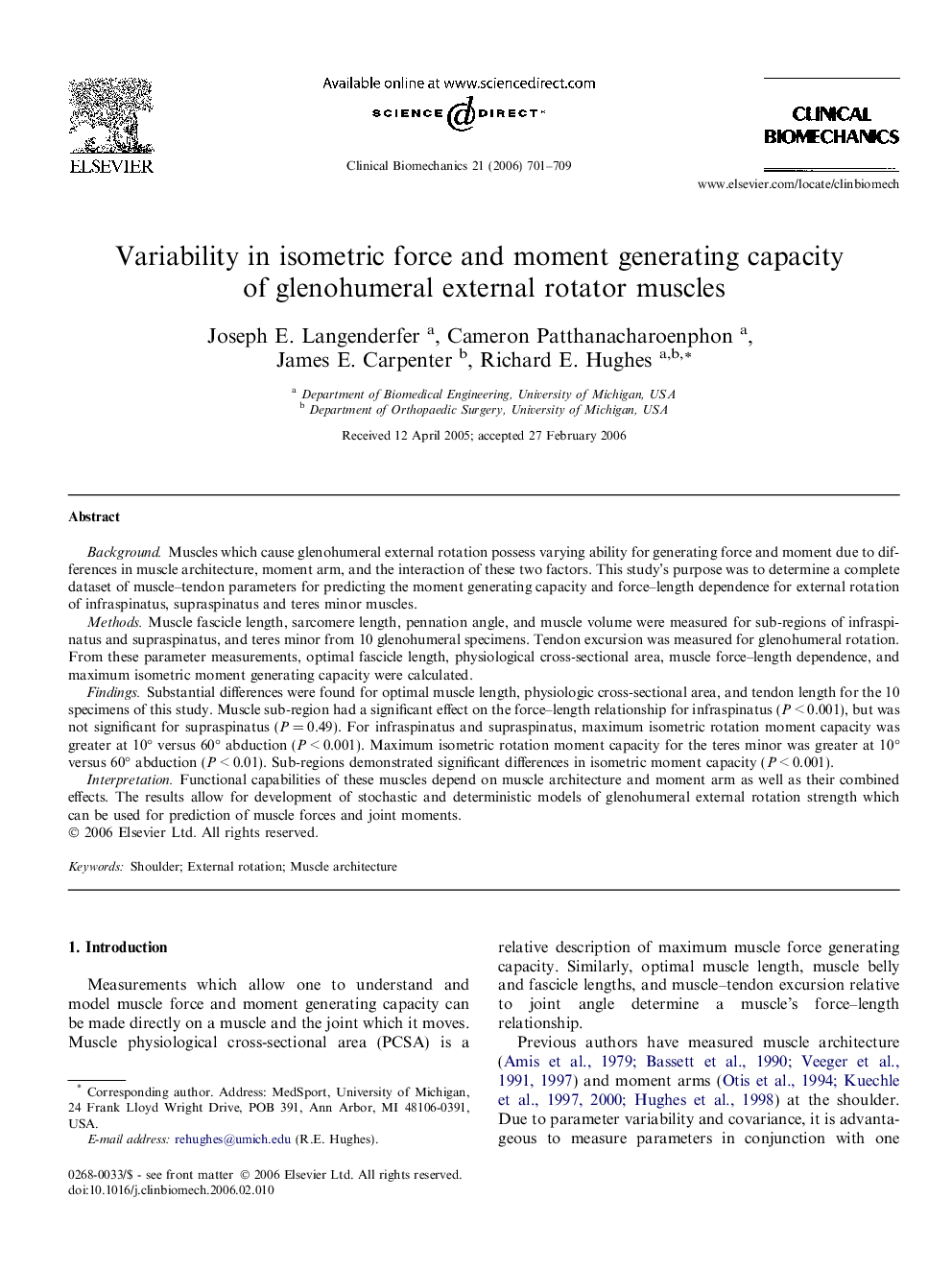| کد مقاله | کد نشریه | سال انتشار | مقاله انگلیسی | نسخه تمام متن |
|---|---|---|---|---|
| 4051547 | 1264995 | 2006 | 9 صفحه PDF | دانلود رایگان |

BackgroundMuscles which cause glenohumeral external rotation possess varying ability for generating force and moment due to differences in muscle architecture, moment arm, and the interaction of these two factors. This study’s purpose was to determine a complete dataset of muscle–tendon parameters for predicting the moment generating capacity and force–length dependence for external rotation of infraspinatus, supraspinatus and teres minor muscles.MethodsMuscle fascicle length, sarcomere length, pennation angle, and muscle volume were measured for sub-regions of infraspinatus and supraspinatus, and teres minor from 10 glenohumeral specimens. Tendon excursion was measured for glenohumeral rotation. From these parameter measurements, optimal fascicle length, physiological cross-sectional area, muscle force–length dependence, and maximum isometric moment generating capacity were calculated.FindingsSubstantial differences were found for optimal muscle length, physiologic cross-sectional area, and tendon length for the 10 specimens of this study. Muscle sub-region had a significant effect on the force–length relationship for infraspinatus (P < 0.001), but was not significant for supraspinatus (P = 0.49). For infraspinatus and supraspinatus, maximum isometric rotation moment capacity was greater at 10° versus 60° abduction (P < 0.001). Maximum isometric rotation moment capacity for the teres minor was greater at 10° versus 60° abduction (P < 0.01). Sub-regions demonstrated significant differences in isometric moment capacity (P < 0.001).InterpretationFunctional capabilities of these muscles depend on muscle architecture and moment arm as well as their combined effects. The results allow for development of stochastic and deterministic models of glenohumeral external rotation strength which can be used for prediction of muscle forces and joint moments.
Journal: Clinical Biomechanics - Volume 21, Issue 7, August 2006, Pages 701–709